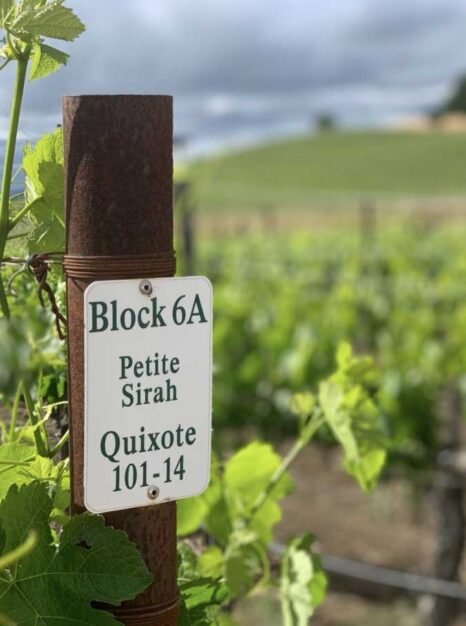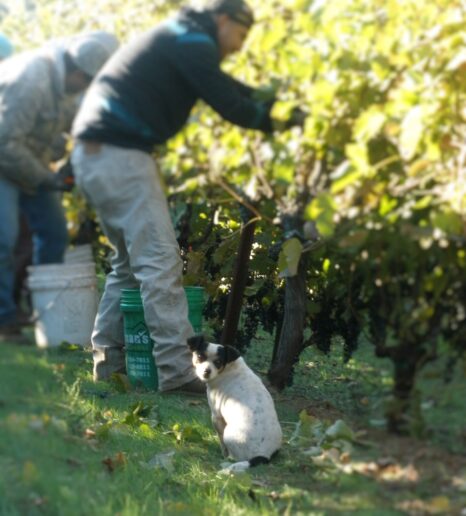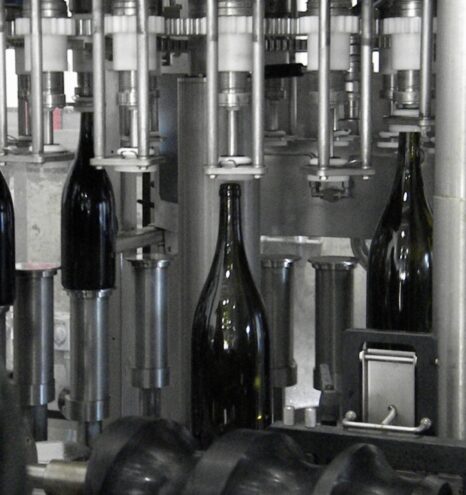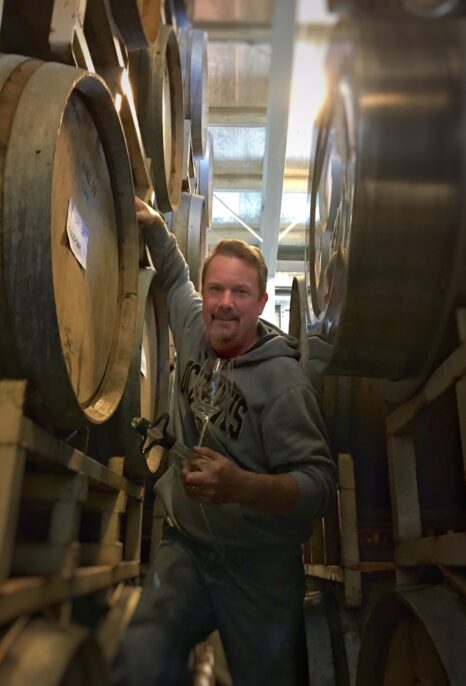Petite Sirah
What is Petite Sirah?
Petite Sirah, a noble pioneer, was introduced to California terroir in 1878. Today, this historic cornerstone is designated an "American Heritage Grape". Originally introduced to American soil between 1878-1884, the variety was cultivated by a botanist Francois Durif a grape grower in the south of France. He was so pleased with the resulting quality and character that he named the new cultivar after himself, “Durif”. Cuttings were transported via Mexico into the United States by Charles McIver and first planted at the Linda Vista Vineyard at Mission San Jose. Lost in translation, the new vine was mistakenly thought to be a dwarf, low-yielding, hearty “petite” clone of Syrah. It was well received and thrived in the California climate and was subsequently planted in abundance across California.


In the 1890’s phylloxera, a deadly root louse, destroyed virtually every native European grape vine planted throughout Europe and beyond, eventually decimating the vineyards of California. As fate would have it, plantings in many diverse regions and soil types across California enabled some Petite Sirah vines to miraculously survive. Healthy cuttings were propagated and continued to flourish across California for three decades until the ill-fated Prohibition Era of 1920-1933. The Volstead Act Ratified in 1919 prohibited the manufacture, sale and transportation of alcohol. However, the thick-skinned Petite Sirah grape was found to be suitable for transport cross county to be crushed for sacrament or personal consumption only thus ensuring some vineyards would survive while others were abandoned or replanted to crops such as fruit and prunes orchards, olives, walnuts and such.
Following the repeal of Prohibition in 1933 the US was heavily weighted by the Great Depression. Many turned to producing alcoholic beverages from fruit and other things oftentimes blended with Petite Sirah which attributed it’s dark color and bold flavor profile. The “jug wine” era was a dark time in Petite’s history but one that ensured it would remain rooted in California’s wine country for years to come.
By 1974 the country’s thirst for wine was on the rise and Petite Sirah became the most widely planted variety in California. Soon thereafter, Cabernet and other noble varietals migrated in droves from Europe to support a statewide trend to replace vast acreage of aging vines. By 1995 the amount of Petite Sirah planted to vine hovered below 2500 acres but today this voluptuous, age worthy variety is back in popularity with a dynamic increase in plantings (over 18,000 acres in 2023 CADFA/USDA). Once the backbone of some of the finest blends and at another time in its history referred to as one of the “other reds”, Petite Sirah is commanding attention as one of the top five varieties of new red grape plantings.
** In 2013 California’s legislative assembly passed the bill HR 9 a resolution which recognizes the contribution of California’s living historic vineyards to the agricultural and social heritage of the state. This monumental bill aims to preserve for perpetuity some of the oldest noble Petite Sirah and other ancient vines planted which still flourish on American soil.


Through DNA analysis similar to those techniques used to study human genetics, it was verified in 1998 (more than a century since its arrival on US soil) that Durif and Petite Sirah are one and the same. The Heritage is a direct descendant of Syrah from the Rhone Valley and Peloursin, a French grape from the Isere and Provence regions of France. According to the findings of Dr. Carole Meredith, Prof. of Viticulture and Enology, University of California; Mr. Durif’s new variety is the offspring of the same noble grape that from which the renown Cote Rotie and Hermitage are made. Therefore, California’s PS is anything but “petite” and in fact arrived with quite the distinguished French pedigree. Today the all-American Petite Sirah is credited as one of the founding Fathers of the California wine industry.
[In 2002 the Federal Bureau of Tax, Tobacco & Alcohol Bureau, formerly recognized “Durif” and “Petite Sirah” (proper spelling is with an “I”) as interchangeable synonyms referring to the same grape.]
The ‘petite’ in the name of this grape refers to the size of its berries and not the vine. The leaves are large with a bright green upper surface and soft spring green underneath. The vine forms tightly packed clusters that can be susceptible to rot in rainy environments. The small berries create a high skin to juice ratio which can produce a wine prevalent with tannin and acidic structure and notable for is proven age-ability. In the presence of new oak barrels the wine can develop abundant tertiary aromatics that continue to evolve for decades. Typically planted in the warmest regions, the modern PS has adapted to the California climate to demonstrate restraint and gallant structure when planted to vine in moderate AVAs.
Petite Sirah produces dark, inky wines that are relatively acidic with firm texture and mouth feel. The bouquet has herbal and black pepper overtones, with redolent plum and black fruit flavors on the palate. Compared to Syrah, the wine is noticeably darker and purple in color. The skins are abundant with tannins granting aging ability that can eclipse 20 years in the bottle. Petite Sirah is flush with antioxidants especially resveratrol, a natural phenol and is considered one of the most heart healthy of all wine varietals.
To learn more visit: psiloveyou.org, historicvineyardsociety.org, ‘A History of Wine in America’ by Thomas Pinney





